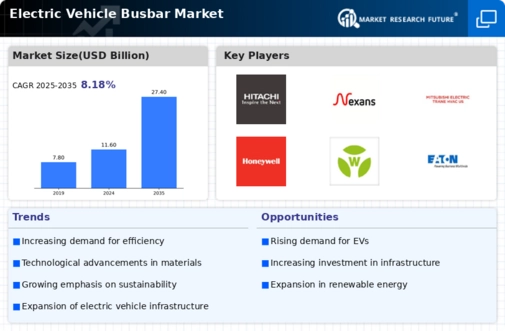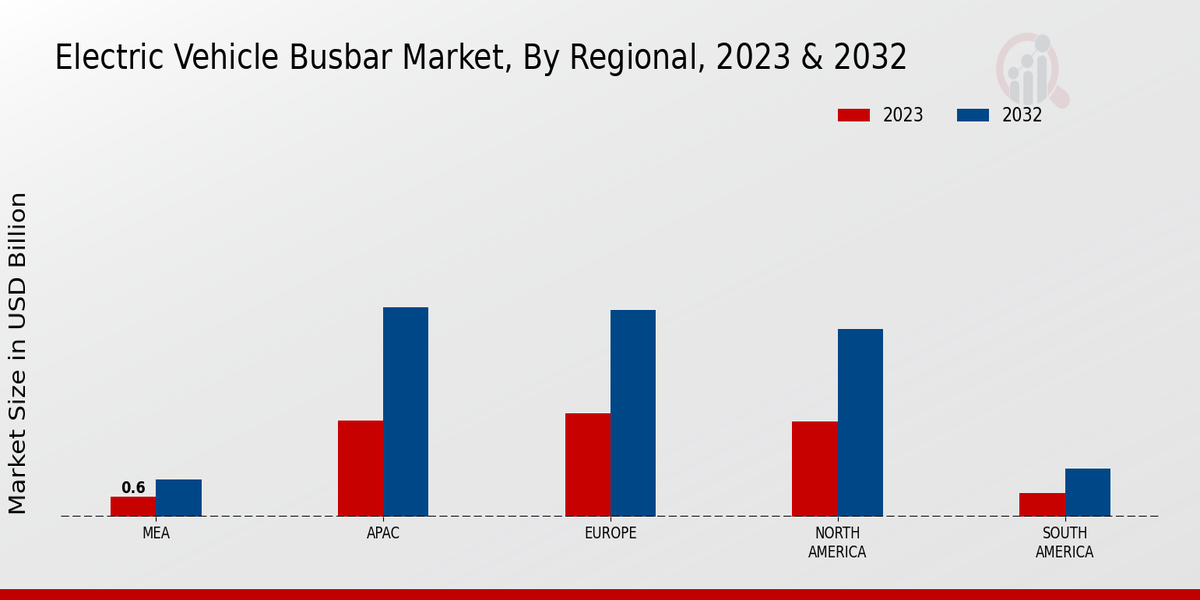Market Growth Projections
The Global Electric Vehicle Busbar Market Industry is poised for substantial growth, with projections indicating a market size of 11.6 USD Billion in 2024 and an anticipated increase to 27.4 USD Billion by 2035. This growth trajectory suggests a compound annual growth rate of 8.18% from 2025 to 2035. The increasing adoption of electric vehicles, coupled with advancements in busbar technology, is likely to drive this expansion. The market's evolution is influenced by various factors, including government policies, technological innovations, and rising consumer awareness regarding sustainability. These dynamics collectively contribute to a robust outlook for the electric vehicle busbar market.
Government Regulations and Policies
Government regulations and policies aimed at reducing carbon emissions are pivotal in shaping the Global Electric Vehicle Busbar Market Industry. Many countries are implementing stringent emission standards, which compel automotive manufacturers to transition towards electric vehicles. This regulatory environment fosters an increase in electric vehicle production, subsequently driving the demand for efficient busbar systems. As governments worldwide commit to ambitious climate goals, the market is expected to witness substantial growth, with projections indicating a rise to 27.4 USD Billion by 2035. The alignment of policies with technological advancements creates a conducive atmosphere for market expansion.
Growing Demand for Electric Vehicles
The increasing global demand for electric vehicles is a primary driver of the Global Electric Vehicle Busbar Market Industry. As consumers and governments prioritize sustainability, the shift towards electric mobility accelerates. In 2024, the market is projected to reach 11.6 USD Billion, reflecting a robust interest in electric transportation solutions. This trend is further supported by various government incentives aimed at promoting electric vehicle adoption, which in turn drives the need for efficient busbar systems to manage power distribution effectively. The integration of advanced technologies in electric vehicles necessitates high-performance busbars, thereby enhancing the market's growth potential.
Rising Investment in Charging Infrastructure
The expansion of charging infrastructure is a crucial factor influencing the Global Electric Vehicle Busbar Market Industry. As electric vehicle adoption increases, the need for reliable and efficient charging solutions becomes paramount. Investments in charging stations and related infrastructure are surging, driven by both public and private sectors. This trend not only enhances the accessibility of electric vehicles but also necessitates the integration of advanced busbar systems to ensure optimal power distribution. The growing network of charging facilities is likely to propel the market forward, as it supports the seamless operation of electric vehicles and their associated technologies.
Technological Advancements in Busbar Systems
Technological innovations in busbar systems significantly contribute to the expansion of the Global Electric Vehicle Busbar Market Industry. The development of lightweight materials and improved conductivity enhances the efficiency and performance of busbars. For instance, the introduction of aluminum and copper alloys has led to reduced weight and increased power handling capabilities. These advancements not only optimize energy transfer but also support the growing complexity of electric vehicle architectures. As manufacturers strive to meet the evolving demands of electric vehicle technology, the focus on innovative busbar solutions becomes increasingly critical, positioning the market for sustained growth.
Focus on Energy Efficiency and Sustainability
The emphasis on energy efficiency and sustainability is a significant driver of the Global Electric Vehicle Busbar Market Industry. As stakeholders across the automotive sector prioritize eco-friendly solutions, the demand for energy-efficient busbar systems is likely to rise. Manufacturers are increasingly adopting practices that minimize energy loss during power distribution, aligning with global sustainability goals. This focus not only enhances the performance of electric vehicles but also contributes to lower operational costs. The market's growth trajectory appears promising, with a projected compound annual growth rate of 8.18% from 2025 to 2035, reflecting the industry's commitment to sustainable practices.














